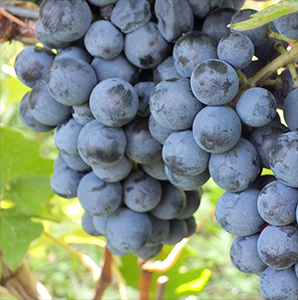 DELIVERY FROM £4.95
DELIVERY FROM £4.95 FREE DELIVERY FOR ORDERS OVER £100
FREE DELIVERY FOR ORDERS OVER £100Home » Community » Wine and Grape Guide » Turchetta

Turchetta is a rare and ancient red grape variety native to the Veneto. Once widely cultivated across the provinces of Padua and Rovigo - particularly in the Polesine area - Turchetta was historically praised for its resilience and adaptability. In fact, early 20th-century records by agronomist Marzotto confirm its prominence in the vineyards of Padua. Over time, however, the variety saw a sharp decline, largely replaced by more commercially popular grapes, and today Turchetta is considered endangered.
In recent years, a small group of dedicated winemakers in Padua and Polesine have taken up the challenge of reviving Turchetta. Their renewed interest is driven not only by the grape’s historical significance but also by its remarkable potential to produce deeply expressive red wines with structure, complexity, and age-worthiness. Thanks to this renewed focus, Turchetta is slowly gaining recognition as one of Veneto’s hidden gems.
Ampelographically, Turchetta is a black-skinned grape with medium-sized, round berries covered in a thick, very waxy blue-black skin. The clusters are generally medium to medium-small in size, pyramidal in shape, occasionally winged, and moderately compact. Its leaves are medium, pentagonal, and typically five-lobed. The vine exhibits medium vigour and reaches full maturity around mid-season. It is known for being particularly rustic - highly resistant to pests and diseases - making it a strong candidate for sustainable and low-intervention viticulture. However, its yields are modest and consistent rather than abundant.
Wines made from Turchetta are striking in colour, typically showing a deep, intense ruby red hue. On the nose, they offer a layered and complex aromatic profile, featuring a combination of fruity, floral, and spicy notes. Common aromas include violets, wild cherries, and blackberries, often accompanied by subtle herbal or peppery undertones. On the palate, Turchetta wines are fresh and lively, with noticeable acidity, pronounced but well-integrated tannins, and a pleasantly bitter finish that adds character and structure.



Before we say ciao, why not join our newsletter & stay up to date on everything happening on planet Italyabroad.com